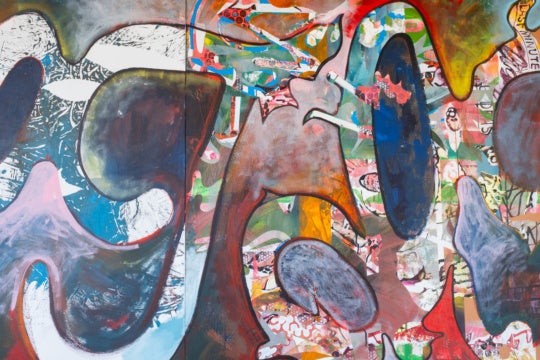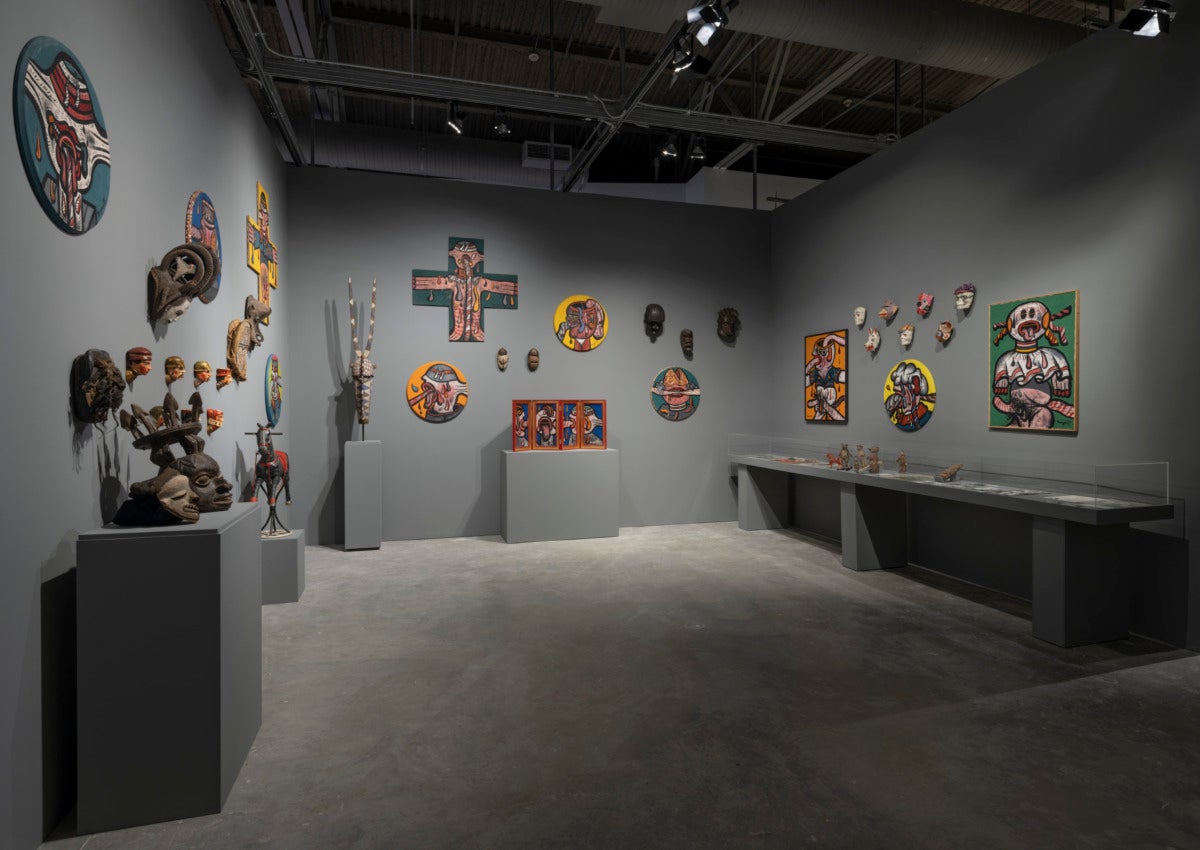
The Nazis hated modernity. Art that didn’t reflect “traditional” values like white supremacy, jingoism, or patriarchy was labeled by the Nazi party as Degenerate Art. This is the oppressive environment in which the artist known as Maryan came to exist. Born Jewish in Nowy Sącz, Poland in 1927, Maryan’s given name was Pinkas Bursztyn. During World War II, he was sent by the Nazis to Auschwitz and Birkenau where he was shot in the face and had to have his leg amputated; but he survived. Maryan is considered one of the first artists to create work inspired by witnessing the Shoah. When he arrived in Jerusalem, they declared him disabled and prevented him from practicing studio art, relegating him to the classroom; nevertheless, he pursued a practice. In Paris, as an artist whose work was shown in dialogue with the CoBrA Movement (named for the Copenhagen, Brussels, and Amsterdam homes of founding artists), he created a significant body of work but enjoyed little commercial success or recognition. He emigrated to America in the early 1960s and took up residence at the Chelsea Hotel.
Throughout his career, Maryan was an artist in exile. He experimented with living situations, influences, and painting styles. His mobility was his modernity–attached neither to blood nor soil as the Nazis would have wanted, constantly in rebellion of himself and them; but despite this fascinating life, Maryan’s work has gone relatively unheralded until recently. In 2021, Curator Alison Gingeras teamed up with Chana Budgazad Sheldon, the Director at the Museum of Contemporary Art in North Miami to produce the first major retrospective of his work. It spans four decades of the artist’s career, leading up to his death in 1977. The show is on view through March 20th.
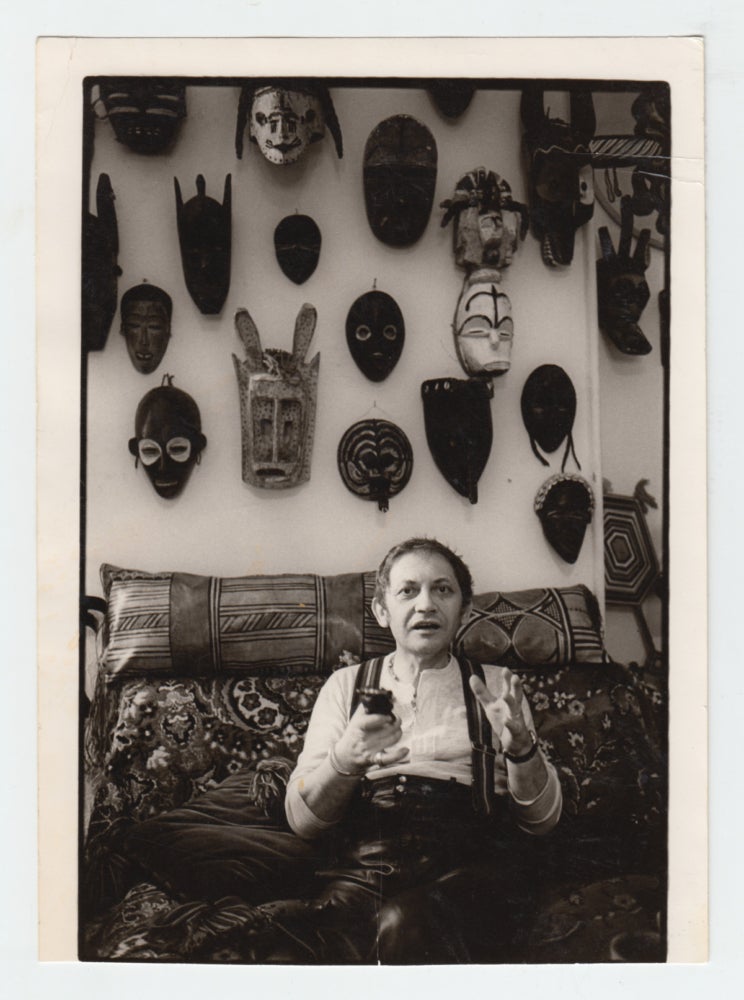
That the retrospective would begin its tour of the world in the city of North Miami might not seem surprising at first—South Florida has long been a home to diaspora Jews—but it’s the connection with another of North Miami’s exile communities which is more dynamic. One third of the city’s population identifies as Haitian. The Miami Haitian community holds generations of trauma related to being treated as second class immigrant citizens in Miami. This is not the reason for the show per se but it’s an unexpected thread which connects with Maryan’s work in other ways too.
Visiting the exhibit is a trip through Maryan’s unconscious mind. A look into the first room of the Maryan exhibit shows the many African masks that lined the artists’ Chelsea Hotel studio walls. The curatorial team wanted to be certain that voices from the Miami community could contextualize Maryan’s work in a broader context. Describing Maryan’s collection, Dr. Erica Moiah James, an assistant professor in African, Black, and Caribbean Art at the University of Miami, writes, “To be present on his walls, this work had to be stripped of cultural meaning and context, disconnected from the animated bodies that danced them.” She writes that this was typical of twentieth century painters, including Picasso and Modigliani. “But,” she continues, “with Maryan I would like to think that there was something more; that he intuited, even if he couldn’t articulate, a familiarity and connection with these works beyond form—a comfort, perhaps, in knowing that they had all been traumatically marked.”
The rooms all zoom in on one specific period or style of work. The connections between this space-time narrative sometimes don’t exist on the literal surface but they are definitely there. In Paris, Maryan began to practice on his personnage style: the focus on one specific human subject. In one room are his portraits of Napoleon Bonaparte. The ruler’s iconic hat and regalia are discernable but like so many of Maryan’s subjects, the conqueror’s visage is contorted, his torso exposed, and swallowing a snake-like object which can be found in many of his paintings. Napoleon’s order to murder all Haitian men led directly to their successful revolution. He also had disdain for Jews so notable it was said to inspire Hitler. The two communities are once again bonded by historic oppression and Maryan’s brush.
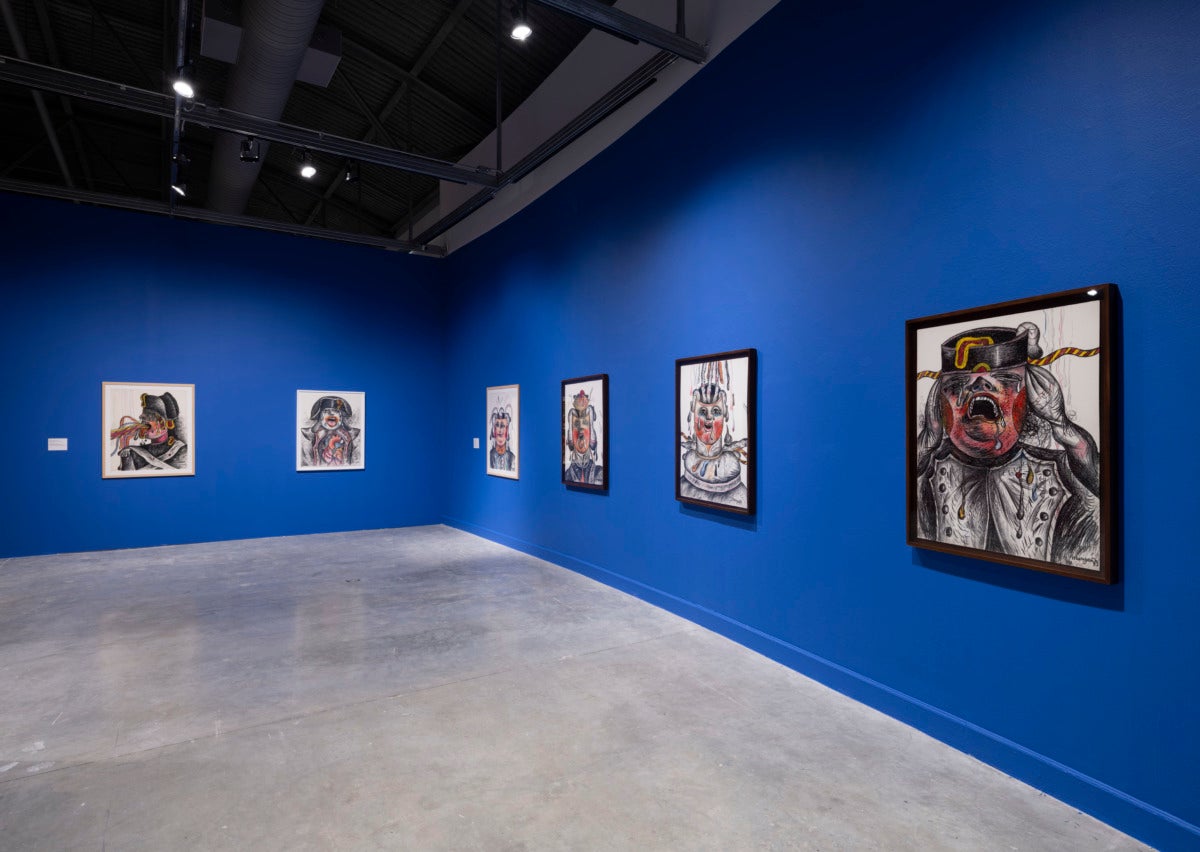
Black ink is also a through line in the artist’s work. Maryan took a variety of approaches and styles to his paintings – from the personages to more psychomorphic work which depicts acts of violence done unto cartoonish subjects. Much of the work uses primary colors but not all, whereas the black ink is always present. Given that Maryan didn’t directly address his Holocaust experience until very late in his life and career, it can only be inferred that this is reflective of the artist’s buried trauma. The exhibit’s layout doubly emphasizes this. Most of the rooms are rectangular except for one. In this black, rhombus-like room, the only room without a primary color, the artist’s one and a half hour long film Ecce Homo remains on loop. The title, meaning “behold the man”, is taken from words spoken by Pontius Pilate on seeing the blooded, thorn-crowned Jesus on the cross. In the film, Maryan reenacts his Holocaust memories using dummy SS officers, machine guns, rope, and paint. In this room are his paintings which also most directly reflect his formative experience.
I’m the grandchild of an Auschwitz survivor. Many of us who’ve inherited this trauma would prefer that it remain a monolith of memory and not wielded in a battle against demagoguery and injustice. Why not follow Maryan’s lead though? The Nazis still hate modernity except, instead of engaging with art at all, they are against all forms of progress. The Holocaust’s lessons remain true. Maryan reflected this in his work. In this spirit, MOCA partnered with Human Rights Watch to create programming related to the show. A step forward.
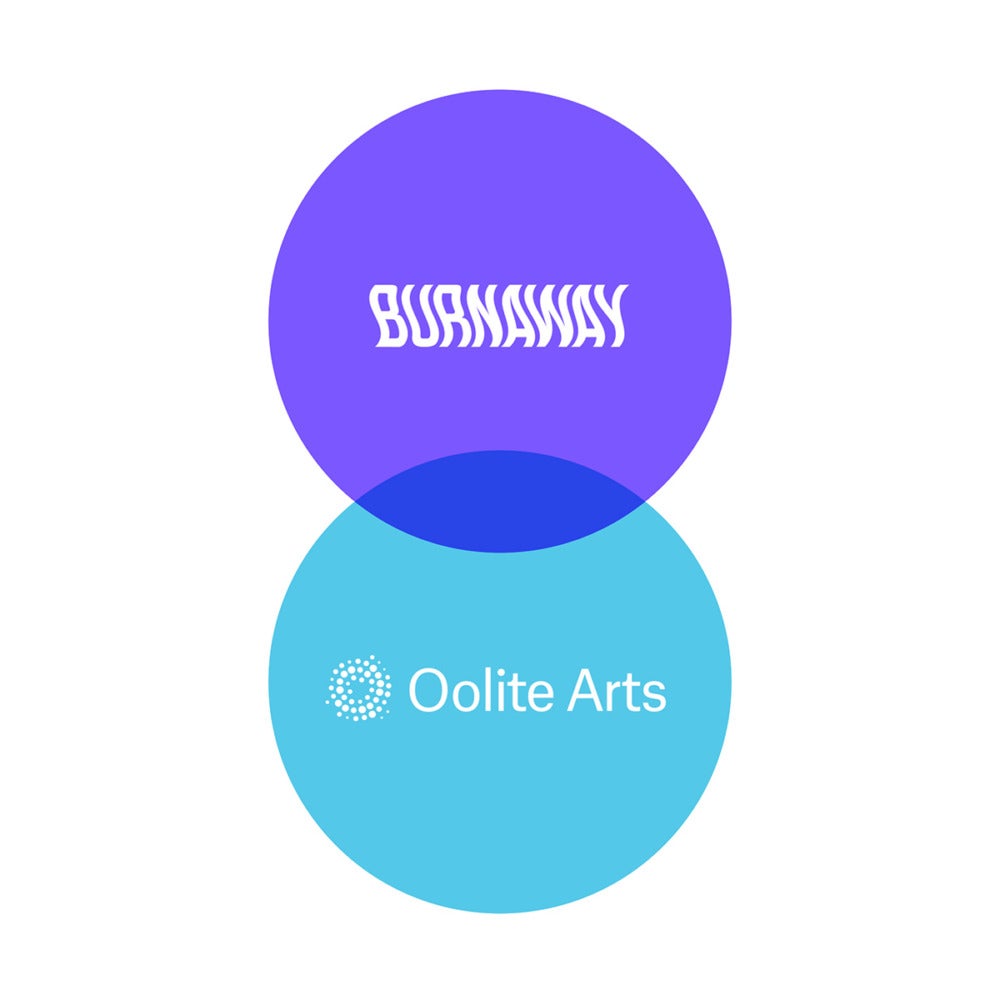
This essay was published in partnership with Oolite Arts as part of a project to increase critical arts coverage in Miami-Dade County.

